
views
Establishing an Aviary with Multiple Finch Species
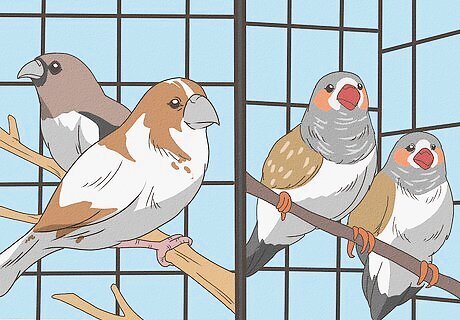
Put finch species together based on their temperament. There are a variety of different species of finch and, with enough space, most should be able to cohabitate. As a general rule, it is best to keep finch species together based on their temperament. For example, keep passive birds with other passive birds and pushy birds with other pushy birds. Passive finch species: Bengalese (society) finch, Double-Barred (owl) finch, Gouldian finch, Red-Headed Parrot finch, and Chestnut and Scaly-Breasted Munia. Pushy finch species: Zebra finch, Java sparrow, Strawberry finch, and Lavender waxbill.
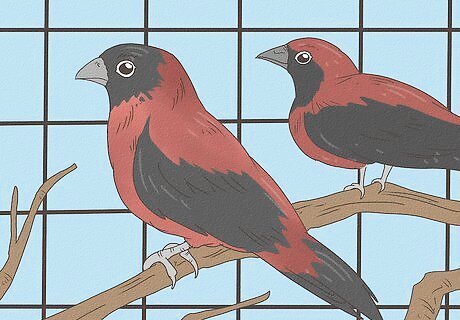
Keep aggressive varieties in a single-species aviary. Some finch species are not suited for mixed aviaries because they are too aggressive. As a result, these species should always be kept in a single-species aviary: Bar-breasted Fire finches, Crimson finches, Cuban Melodious finches, Parson finches, Peter’s Twinspots, and Violet-eared waxbills.
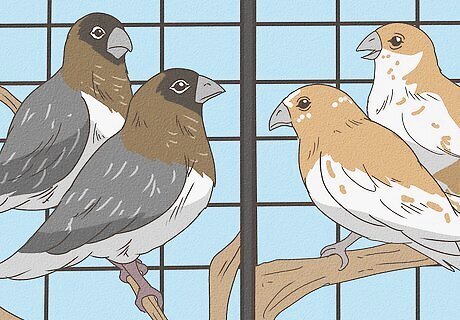
Keep pairs of species together. Finches should be kept in cock-hen pairs. If you are introducing a variety of finch species to each other, be sure that each species has at least one pair. Unpaired finches, especially males, can become aggressive, which will lead to social problems in your aviary. Juvenile birds will cohabitate outside of pairs, but by about nine weeks, they will get the urge to pair up. At this point, female-female and male-male pairs will become aggressive with each other if they are not kept with other birds.
Selecting Birds for Cohabitation with Finches

Introduce birds of a similar size. Larger birds may pick on smaller birds in an aviary. To protect both your finches and other birds in your aviary, choose breeds that are similar sizes. Canaries, budgies, and button quails may all be good choices. Do not put finches together with parrots.
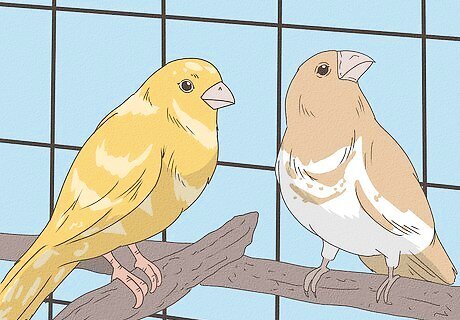
Put finches and canaries together if they have a similar temperament. Canaries are very docile and will pair up nicely with many different bird species, including finches. Some finches are more dominant and may become territorial and aggressive with canaries. As a result, it is best to pair canaries with passive finch species that are similar in size to canaries. This way the finch will not feel threatened. For example, canaries mix well with the Bengalese (society) finch and Star finch. Multiple non-agressive finch species can be combined with canaries, as long as they are in pairs. You can mix canaries with more aggressive finches, such as the Zebra finch, but you will need a large aviary that is larger than 49 inches (126 cm) wide.
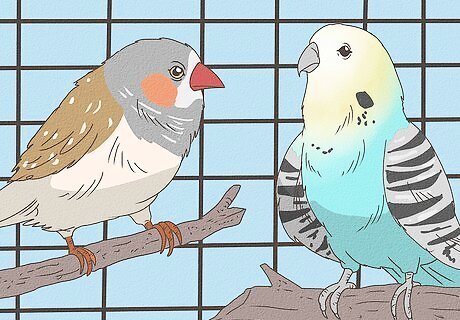
Keep zebra finches and budgies together. Budgies and zebra finches are both native to Australia and can be kept together quite easily in the same aviary. In fact, the two species will usually go about their business without even noticing each other.

Pair finch and button quail together in an outdoor cage. If you are keeping finches outside in a spacious cage, then you can pair them with button quail. Quail will spend their time scuttling around on the ground and will not be bothered by the finches flying overhead. Quail can be paired with any variety of finch species at the same time because they will remain on the floor of the cage and not interact with the finches. The cage should be kept outdoors and should be at least four to five square inches (120-150 square cm) of floor space per bird pair.
Arranging the Aviary
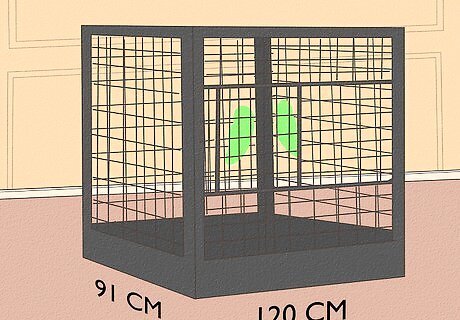
Ensure there is three to four square feet of floor space per bird pair. A large aviary will make it possible for the birds to have enough territory and not feel like they need to compete for space and resources. As a general rule, your multi-species aviary should have three to four square feet (91-120 square cm) of floor space per pair of birds. It is possible to place passive finch species with pushy finch species, but they will need more space. The larger the aviary, the more likely that finches will be able to cohabitate with other finch species. To cohabitate aggressive birds with passive birds you will need at least four to five square feet (120-150 square cm) of floor space per bird pair. The larger the cage the less likely fights will break out. If you have too many birds for the size of your aviary, the birds may start fighting.
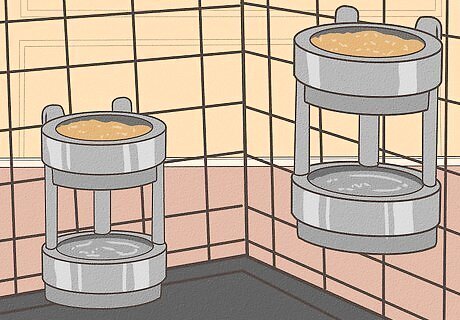
Place multiple food and water stations in the aviary. Whenever you are keeping more than two birds in an aviary, you should place multiple feeding stations throughout the cage. This way an aggressive bird will not be able to guard the food and water source from other birds. Start by placing two stations in your aviary and then increase the number if you notice that some of the finches are resource guarding.
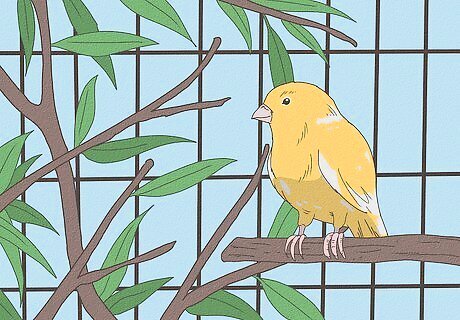
Include plant cover. Birds need perches and plant cover in order to sleep and roost. Plant cover can also provide birds with hiding places to get away from aggressive birds. Place perches, plants, and twigs inside the aviary to provide the birds with protection and privacy. Ensure that there are multiple perches located near the top of the cage. This will reduce the chances of birds competing for the best perch. There should be at least one perch available for each pair in the aviary.
Monitoring the Birds

Introduce the birds at the same time. It is best to bring the birds home together and introduce them to the aviary at the same time. This way none of the birds will feel as though this is their territory. If you are introducing new birds to an established aviary, you should always introduce them in pairs. This way one bird will not be picked on for being new.
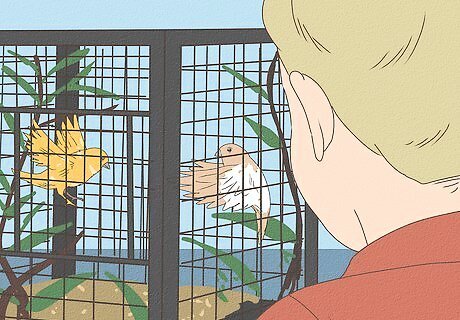
Monitor the birds daily. You should check on the birds daily to make sure that none of the birds are being aggressive or injuring other birds. Look for feather picking, chasing, and fighting between birds. Although some chasing and fighting is natural periodically, you should make sure that no birds are being injured.
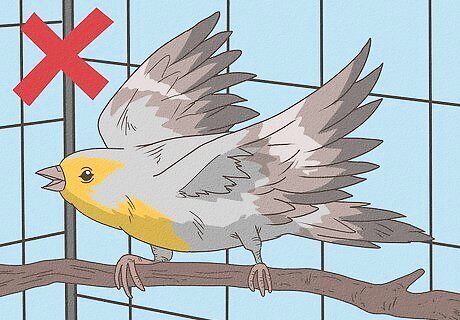
Remove birds that are bullying. If you notice ongoing and consistent aggression, then you should remove the aggressive bird from the aviary. Place them in a separate cage for a while. You can reintroduce the bird in a few days. When you do so, try and rearrange the cage slightly to help change the power dynamic. For example, you could move perches and food stations so that the habitat feel different to the birds.




















Comments
0 comment